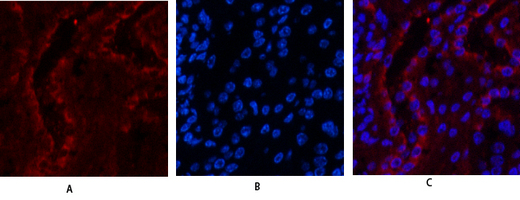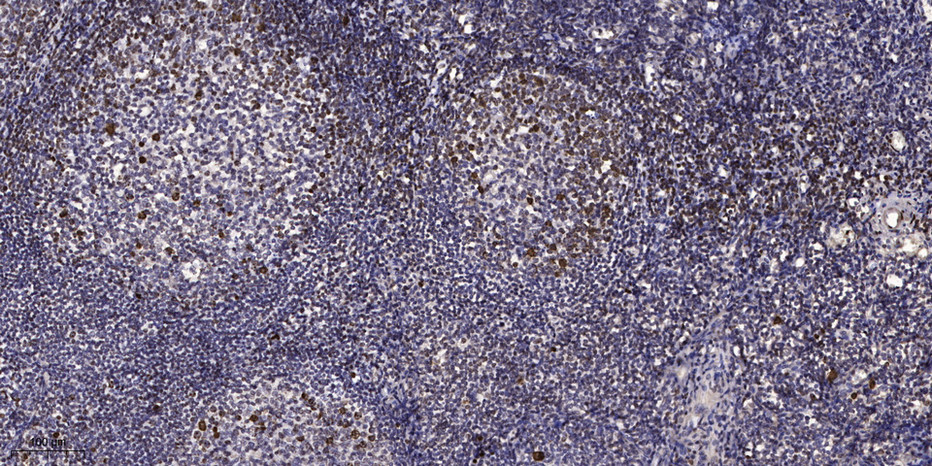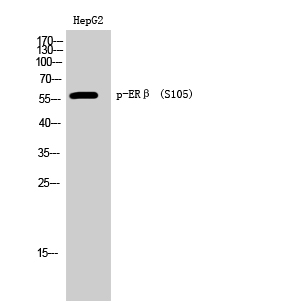
Catalog: KA1459C
Size
Price
Status
Qty.
96well
$470.00
In stock
0
Add to cart


Collected


Collect
Main Information
Reactivity
Human, Mouse, Rat
Applications
ELISA
Conjugate/Modification
Phospho
Detailed Information
Storage
2-8°C/6 months,Ship by ice bag
Modification
Phospho
Detection Method
Colorimetric
Related Products
Antigen&Target Information
Gene Name:
ESR2 ESTRB NR3A2
show all
Other Name:
ESR2 ;
ESTRB ;
NR3A2 ;
Estrogen receptor beta ;
ER-beta ;
Nuclear receptor subfamily 3 group A member 2
ESTRB ;
NR3A2 ;
Estrogen receptor beta ;
ER-beta ;
Nuclear receptor subfamily 3 group A member 2
show all
Database Link:
Background:
domain:Composed of three domains: a modulating N-terminal domain, a DNA-binding domain and a C-terminal steroid-binding domain.,function:Nuclear hormone receptor. Binds estrogens with an affinity similar to that of ESR1, and activates expression of reporter genes containing estrogen response elements (ERE) in an estrogen-dependent manner. Isoform beta-cx lacks ligand binding ability and has no or only very low ere binding activity resulting in the loss of ligand-dependent transactivation ability. DNA-binding by ESR1 and ESR2 is rapidly lost at 37 degrees Celsius in the absence of ligand while in the presence of 17 beta-estradiol and 4-hydroxy-tamoxifen loss in DNA-binding at elevated temperature is more gradual.,online information:Estrogen receptor entry,similarity:Belongs to the nuclear hormone receptor family.,similarity:Belongs to the nuclear hormone receptor family. NR3 subfamily.,similarity:Contains 1 nuclear receptor DNA-binding domain.,subunit:Binds DNA as a homodimer. Can form a heterodimer with ESR1. Interacts with NCOA3, NCOA5 and NCOA6 coactivators, leading to a strong increase of transcription of target genes. Interacts with PELP1 and UBE1C. Isoform beta-2/cx preferentially forms a hetereodimer with ESR1 rather than ESR2 and inhibits DNA-binding by ESR1. Interacts with AKAP13. Interacts with DNTTIP2. Interacts with isoform 4 of TXNRD1.,tissue specificity:Isoform beta-1 is expressed in testis and ovary, and at a lower level in heart, brain, placenta, liver, skeletal muscle, spleen, thymus, prostate, colon, bone marrow, mammary gland and uterus. Also found in uterine bone, breast, and ovarian tumor cell lines, but not in colon and liver tumors. Isoform beta-2 is expressed in spleen, thymus, testis and ovary and at a lower level in skeletal muscle, prostate, colon, small intestine, leukocytes, bone marrow, mammary gland and uterus. Isoform beta-3 is found in testis. Isoform beta-4 is expressed in testis, and at a lower level in spleen, thymus, ovary, mammary gland and uterus. Isoform beta-5 is expressed in testis, placenta, skeletal muscle, spleen and leukocytes, and at a lower level in heart, lung, liver, kidney, pancreas, thymus, prostate, colon, small intestine, bone marrow, mammary gland and uterus. Not expressed in brain.,
show all
Function:
regulation of cell growth, behavioral fear response, neuron migration, behavioral defense response, transcription,regulation of transcription, DNA-dependent, regulation of transcription from RNA polymerase II promoter, anti-apoptosis, cell motion, defense response, intracellular signaling cascade, cell-cell signaling, behavior, learning or memory, negative regulation of cell proliferation, regulation of cell size, response to endogenous stimulus, response to hormone stimulus, positive regulation of biosynthetic process, response to organic substance, positive regulation of macromolecule biosynthetic process, positive regulation of macromolecule metabolic process, positive regulation of gene expression, regulation of cell death, cell migration, negative regulation of cell growth, steroid hormone receptor signaling pathway, estrogen receptor signaling pathway, intracellular receptor-mediated signaling pathway, positive regulation of cellular biosynthetic process, regulation of cellular component size, regulation of gene-specific transcription, multicellular organismal response to stress, response to testosterone stimulus, regulation of growth,regulation of cell proliferation, fear response, regulation of apoptosis, negative regulation of apoptosis, regulation of programmed cell death, negative regulation of programmed cell death, positive regulation of gene-specific transcription, regulation of neuron apoptosis, neuroprotection, regulation of transcription, negative regulation of cell size, regulation of survival gene product expression, positive regulation of survival gene product expression, positive regulation of transcription, DNA-dependent, negative regulation of growth, positive regulation of nucleobase, nucleoside, nucleotide and nucleic acid metabolic process, positive regulation of transcription, positive regulation of transcription from RNA polymerase II promoter, negative regulation of behavior, response to steroid hormone stimulus, negative regulation of response to stimulus, cell motility, regulation of epithelial cell proliferation, negative regulation of epithelial cell proliferation, regulation of behavior, neurological system process, cognition, positive regulation of nitrogen compound metabolic process, regulation of RNA metabolic process, positive regulation of RNA metabolic process, localization of cell, negative regulation of cell death,
show all
Cellular Localization:
Nucleus .
show all
Signaling Pathway
Reference Citation({{totalcount}})
Catalog: KA1459C
Size
Price
Status
Qty.
96well
$470.00
In stock
0
Add to cart


Collected


Collect
Recently Viewed Products
Clear allPRODUCTS
CUSTOMIZED
ABOUT US
Toggle night Mode
{{pinfoXq.title || ''}}
Catalog: {{pinfoXq.catalog || ''}}
Filter:
All
{{item.name}}
{{pinfo.title}}
-{{pinfo.catalog}}
Main Information
Target
{{pinfo.target}}
Reactivity
{{pinfo.react}}
Applications
{{pinfo.applicat}}
Conjugate/Modification
{{pinfo.coupling}}/{{pinfo.modific}}
MW (kDa)
{{pinfo.mwcalc}}
Host Species
{{pinfo.hostspec}}
Isotype
{{pinfo.isotype}}
Product {{index}}/{{pcount}}
Prev
Next
{{pvTitle}}
Scroll wheel zooms the picture
{{pvDescr}}



















